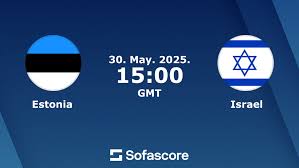Estonia vs Israel: A Comprehensive Comparison

Introduction
The comparison between Estonia and Israel brings to light the unique characteristics of two dynamic nations that are significantly impacting the global stage. While Estonia, located in Northern Europe, is known for its technological advancements and e-governance, Israel, in the Middle East, is recognized for its innovation in sectors like defense, agriculture, and technology. Understanding their differences and synergies is crucial as both countries exemplify resilience and growth.
Political and Historical Context
Estonia is a relatively young country in terms of statehood, gaining independence from the Soviet Union in 1991. It has since developed a robust democratic system and has been a member of the European Union since 2004. In contrast, Israel was established in 1948 and has a complex geopolitical landscape, often marked by conflict but also marked by a vibrant democracy. Both countries face distinct challenges: Estonia struggles with its geographic isolation and demographic issues, while Israel navigates ongoing tensions in the region.
Economic Overview
Estonia boasts one of Europe’s fastest-growing economies, driven by its digital ecosystem, attracting startups and foreign investments. The country’s e-Residency program and commitment to technology have made it a hotspot for digital entrepreneurship. On the other hand, Israel has a well-established tech industry, often referred to as the ‘Startup Nation,’ with significant advancements in cybersecurity, life sciences, and agricultural technologies. Despite their size, both economies demonstrate robust growth patterns and innovative capabilities.
Cultural Aspects
The cultures of Estonia and Israel are distinct and reflect their historical backgrounds. Estonia has a rich heritage influenced by its Nordic and Baltic history, showcasing traditional music, dance, and literature. Israel’s culture is a melting pot of various influences, represented in its cuisine, art, and traditions stemming from Jewish history and diverse immigrant communities. Both countries hold a strong sense of national identity, with cultural events and festivals playing a significant role in their societies.
Conclusion
The comparison between Estonia and Israel underscores the diverse paths countries can take toward development and innovation. While Estonia illustrates success in digital governance and a strong European presence, Israel showcases a resilient spirit in a challenging environment, fostering initiatives in technology and agriculture. As globalization continues to shape the dynamics between nations, the shared triumphs and challenges of Estonia and Israel may pave the way for collaborative opportunities both regionally and globally.









